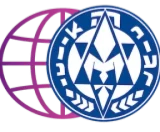Uri Kostzer, Mazkirut Olamit of Hanoar Hatzioni
Oh, Yerushalayim, the eternal capital of the Jewish people. Ir David, Yerushalayim shel Zahav… I have always felt Jerusalem as the “Symbol of the Jewish people”: many people pray toward Jerusalem; for Jerusalem I broke a glass in my wedding and promised never to forget it; in Jerusalem we aspire to be next year, its history and biblical stories….
But as this date approaches, it evokes mixed feelings in me. Yerushalayim is the symbol of Am Israel, there is no doubt. But what exactly do we celebrate in Yom Yerushalayim? Some will claim we celebrate the reunification and sovereignty of Jerusalem after the Six Day War. But what else does this “reunification” mean? Not only did Jerusalem come under Israeli control, but also Gaza, Judea and Samaria, which today, after fifty-one years, means the annexation of 2.5 million Palestinians with whom we cannot reach peace or coexist. And what does this “reunification” mean? Whenever I visit the Kotel, I stand on the steps going down from the “Rova HaYehudi” watching the beautiful landscape. I also notice that behind the Kotel appears East Jerusalem. It is undoubtedly the eternal capital of our people, but I wonder: is it indivisible?
Jerusalem is the symbol of the three major religions. Thousands of tourists of all nationalities and religions walk through its streets. But it hurts me that, today, the Kotel, the most “sacred” place in our history, is also a symbol of the Haredi monopoly and Kfiya Datit. They are those who only allow praying and celebrating in the Kotel according to the orthodox customs. The best example is that of Neshot HaKotel and their struggle, which is also my struggle. And in this coexistence, we still have a lot of work to do considering the difficulties and dangers involving holding the yearly Gay Pride Parade in this city due to the intolerance of some sectors or the events occurring with the Beitar Yerushalayim soccer team, which is known for its racist songs, intolerance and use of violence.
Yom Yerushalayim is a day of mixed feelings between what Jerusalem represents for our people and the current situation in 2018; between the ecstasy of the victory after the war and the heavy inheritance it left us. We cannot cling solely to the symbol that Jerusalem was. We must also delve into what it is today and what we aspire for it to be.
As chaverim of Hanoar Hatzioni, we must discuss the challenges that Jerusalem faces, in particular, and those of Medinat Israel, in general.
In the meanwhile, for me, celebrating hurts.










